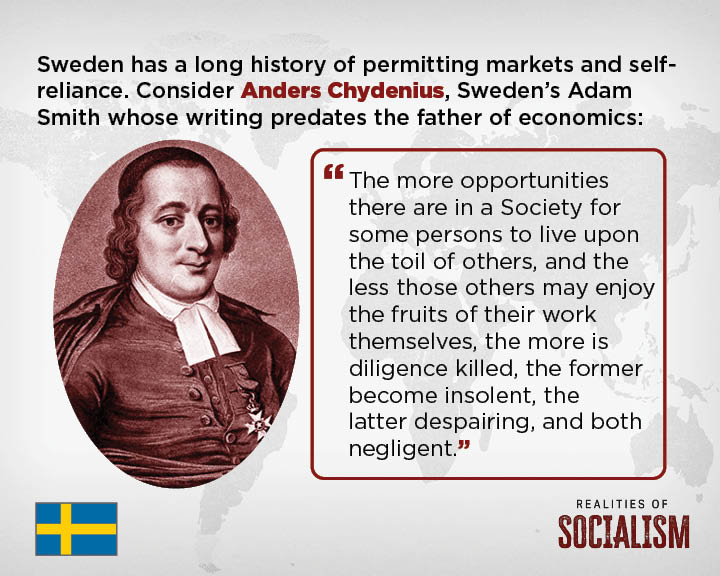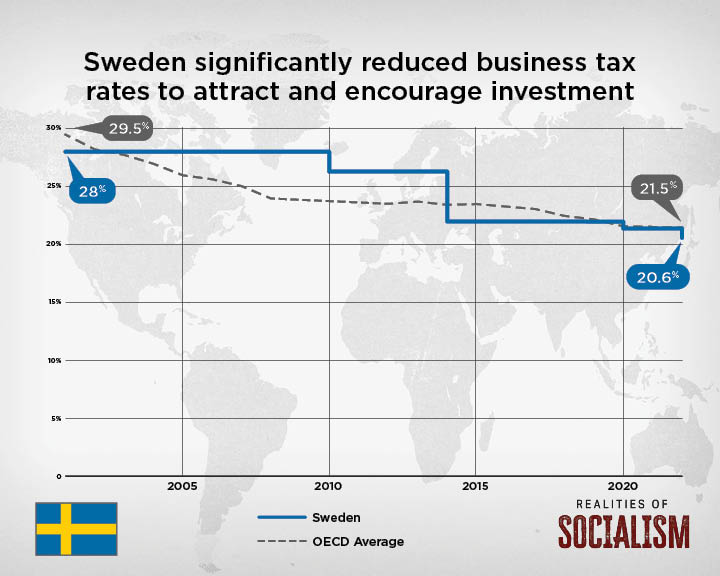The Reality of Socialism: Sweden | Mini-Documentary
The Wall St. Journal’s Mary O’Grady and author Johan Norberg discuss what Sweden is—and more importantly what it is not—when it comes to its economic system and history. Despite the mischaracterizations of the country, after experimenting with socialist policies in the 1970s and 1980s (with disastrous results) Sweden actually has a long history of being a free, open and competitive economy. This video is part of a new multimedia project, The Realities of Socialism, by the Fraser Institute in Canada, the Institute of Economic Affairs in the UK, the Institute of Public Affairs in Australia and the Fund for American Studies in the U.S.
More VideosPodcast
Realities of Socialism: Is Sweden Really a Socialist Country?
Dr. Johan Norberg, writer, historian, and author of The Mirage of Swedish Socialism: The Economic History of a Welfare State, joins host Rosemarie Fike to talk about how Sweden finances such a large welfare state, as well as their approach to personal income taxes and value-added tax. They even dive into why it is people think of Sweden when they think of a “successful socialist model”.
Videos
Infographics
- All
- Government
- Economy
- Taxes
Explore the book
The Mirage of Swedish Socialism: The Economic History of a Welfare State details what Sweden is—and more importantly what it is not—when it comes to its economic system and history. Despite the mischaracterizations of the country, after experimenting with socialist policies in the 1970s and 1980s (with disastrous results) Sweden actually has a long history of being a free, open and competitive economy.
- Part 1 From Rags to Riches
This chapter documents Sweden’s economic history from the mid-1800s through to 1970, including its exceptional century of growth from 1870 to 1970, when under the Gripenstedt System, Sweden went from being one of Western Europe’s poorest countries to the fourth-richest on earth. - Part 2 The Rise and Decline of Socialism
In the 1970s and 1980s, Sweden began experimenting with socialist policies, including higher government spending, higher taxation, increased regulations, and price controls, which resulted in stagnating economic and productivity growth, ballooning government debt and an exodus of businesses and entrepreneurs. In the early 1990s, an economic and financial crisis forced the government to retreat from its socialist experiment. It reduced government spending, lowered taxes and liberalized markets, and Sweden once again embraced open and competitive markets. - Part 3 The Evolution of Sweden’s Fiscal Policy
This chapter documents how the country that, at one time, held a worldwide record for high taxes and government spending and with unsustainable debt levels turned itself into a fairly normal European country, with fiscal rules and debt levels that are in many ways exemplary. - Part 4 The Evolution of Sweden’s Social Policy
Sweden’s social policy stands out internationally for two reasons: First, social services and income supports are extensive and mostly universal, which explains the size of the Swedish welfare state since the 1970s. Second, since the 1990s, Sweden has become a pioneer in privatizing social services, giving private providers the freedom to compete with public ones on similar terms and funding, and giving citizens the freedom to choose between different providers, including from among for-profit businesses.



































